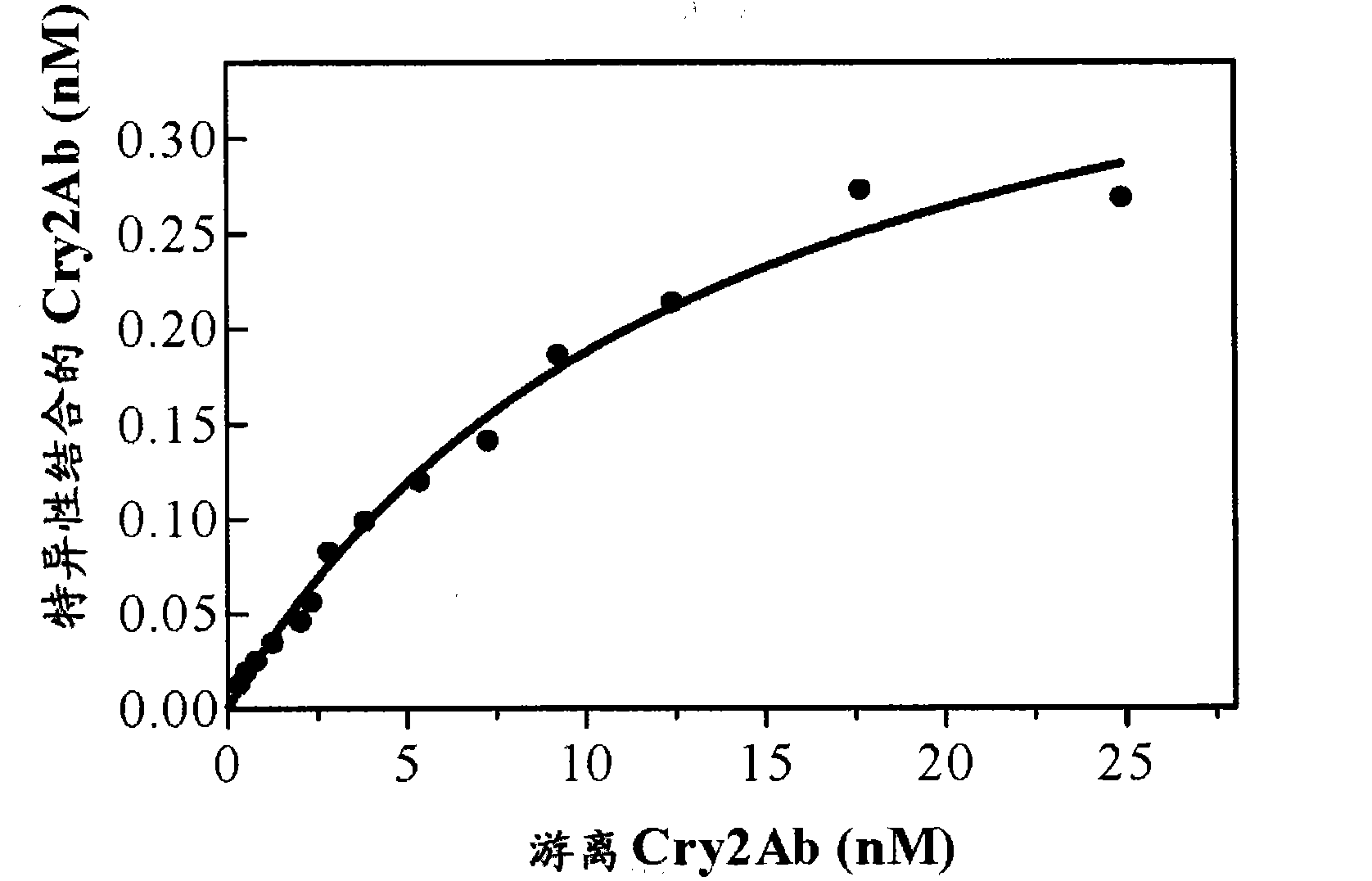Bollworm insect resistance management in transgenic plants
An insecticidal, cotton boll technology, applied in plant products, genetic engineering, botany equipment and methods, etc.
- Summary
- Abstract
- Description
- Claims
- Application Information
AI Technical Summary
Problems solved by technology
Method used
Image
Examples
Embodiment 1
[0135] 1.1. Materials and methods
[0136] Toxin purification and toxin activation
[0137] Cry1Ac-expressing Bacillus thuringiensis strain HD73 from the Bacillus Genetic Stock Collection (Columbus, OH) was grown in CCY medium (Stewart et al., 1981) for 48 hours at 28.5°C with continuous shaking and supplemental air. The precipitated insoluble fraction was washed twice with 1M NaCl, 10 mM EDTA and once with 10 mM KCl. Cry1Ac crystals were dissolved in freshly prepared carbonate buffer (50 mM Na2CO3 / NaHCO3, 10 mM DTT; pH 10.5) and incubated at room temperature for 2.5 hours with shaking at 150 rpm. The insoluble residue was discarded by centrifugation at 25000 xg for 10 minutes at 4°C. Solubilized Cry1Ac protoxin was activated by incubation with trypsin (SigmaT-8642) at a trypsin:protein ratio of 1:10 (w:w) for 2 hours at 37°C. After centrifugation at 25000 x g for 10 minutes at 4°C, the supernatant was dialyzed against buffer A (20 mM Tris-HCl, pH 8.65), filtered and used...
Embodiment 2
[0178] Several methods are contemplated for obtaining the combined expression of at least two insecticidal protein genes such as the Cry2Ae and Cry1Ab genes in transgenic plants such as maize or cotton plants.
[0179] The first method is based on sequential transformation steps in which plants transformed with the first chimeric gene are retransformed to introduce the second gene. This sequential transformation preferably uses two different selectable marker genes, such as a kanamycin resistance gene and a phosphinothricin acetyltransferase gene that confers resistance to the glufosinate herbicide (e.g., the well-known pat or bar genes ). The use of these two selectable markers has been described in De Block et al. (1987).
[0180] The second method is based on the co-transformation of two chimeric genes encoding different insecticidal proteins on different plasmids in a single step. Integration of two genes can be selected for by use of selectable markers linked to the res...
PUM
 Login to View More
Login to View More Abstract
Description
Claims
Application Information
 Login to View More
Login to View More - R&D
- Intellectual Property
- Life Sciences
- Materials
- Tech Scout
- Unparalleled Data Quality
- Higher Quality Content
- 60% Fewer Hallucinations
Browse by: Latest US Patents, China's latest patents, Technical Efficacy Thesaurus, Application Domain, Technology Topic, Popular Technical Reports.
© 2025 PatSnap. All rights reserved.Legal|Privacy policy|Modern Slavery Act Transparency Statement|Sitemap|About US| Contact US: help@patsnap.com



